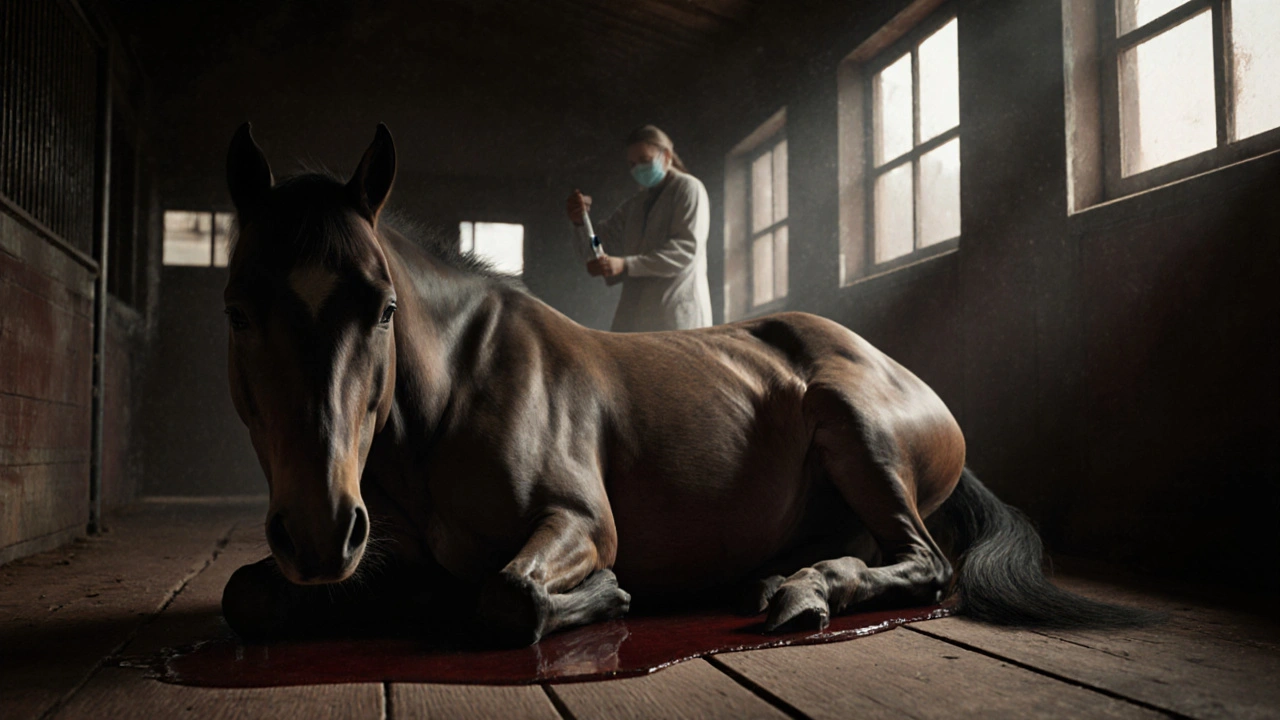Koně svalová slabost: příčiny, příznaky a co s tím dělat
When a horse shows signs of svalová slabost, Stav, kdy kůň ztrácí sílu, nemůže se pohybovat přirozeně a často se nechce vznášet nebo stát. Also known as slabost u koní, it is not just tiredness—it’s a red flag that something deeper is wrong with its muscles, nerves, or metabolism. Many owners think their horse is just lazy or out of shape, but true muscle weakness doesn’t go away with rest. It’s often tied to nutrition, nerve damage, electrolyte imbalance, or even serious conditions like equine motor neuron disease.
One of the most common triggers is výživa koní, Důležitý faktor pro udržení svalové síly, který zahrnuje správný poměr bílkovin, minerálů a vitamínů. If your horse eats poor-quality hay, lacks vitamin E or selenium, or gets too much sugar, its muscles start to break down slowly. You might notice it stumbling more, having trouble rising after lying down, or trembling when standing still. These aren’t just quirks—they’re warning signs. Another frequent culprit is kolika u koní, Bolavý stav břicha, který může ovlivnit celkovou sílu a pohyb koně kvůli bolesti a stresu. A horse in pain won’t move well, and that can look like muscle weakness even if the muscles themselves are fine.
Don’t ignore changes in posture or gait. A horse with svalová slabost might stand with its hind legs too far under its body, or it might drag its toes. Its tail might hang lower than usual, and you might see muscle wasting along the topline. These signs don’t appear overnight—they creep in over weeks or months. That’s why so many owners wait too long to act. Early detection is everything. Blood tests can check for vitamin deficiencies or nerve damage, and a vet can rule out conditions like equine protozoal myeloencephalitis (EPM) or tying-up syndrome.
What you can do right now? Start with simple things: make sure your horse gets clean, fresh forage every day, not just dry hay. Add a vitamin E supplement if your hay is old or stored poorly. Avoid feeding large amounts of grain, especially if your horse doesn’t work hard. Let it move naturally—turnout in a paddock helps more than long walks on a lead. And if you notice weakness lasting more than a couple of days, call your vet. Don’t wait for it to get worse.
The posts below cover everything you need to know: from how to recognize the earliest signs of muscle trouble, to what feeds and supplements actually help, to how stress and digestive problems like kolika can make it worse. You’ll find real advice from experienced vets—not guesses or internet myths. If your horse has been acting off, these articles will show you exactly where to look and what steps to take next.
18 lis
Napsal :
Dalibor Němec
Kategorie :
Onemocnění koní
Štítky :
myopatie u koní
svalová onemocnění koní
myopathie koní
koně svalová slabost
myopatie léčba

Co je myopatie u koní? Příčiny, příznaky a jak to léčit
Myopatie u koní je skupina svalových onemocnění, která může vést k náhlé slabosti, bolesti a selhání ledvin. Příčiny jsou různé - od špatné výživy po dědičné poruchy. Včasná léčba zachrání život.
© 2025. Všechna práva vyhrazena.
